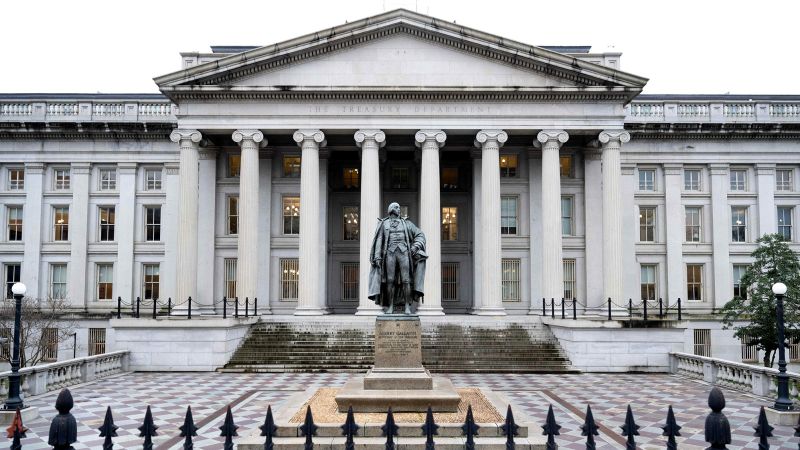The US national debt has skyrocketed to a $34 trillion, a milestone in the nation’s financial history. The pace at which this debt has accumulated questions about the economic stability that lie ahead.

Also Read: Bitcoin Hits 21-Month High, Goes Above $45,000
The $34 trillion mark happened much sooner than anticipated, defying pre-pandemic projections. Back in January 2020, the Congressional Budget Office foresaw gross federal debt reaching $34 trillion by fiscal year 2029. However, the economic drastically changed with the onset of a multi-year pandemic in 2020.
Both the Trump and Biden administrations resorted to borrowing to support economic recovery efforts. The shutdown of major sectors of the United States economy in response to the pandemic created an urgent need for financial injections, leading to increased government spending.
The rebound from the economic downturn, while successful, came at the cost of a surge in inflation rates, driving up interest rates and rendering it more expensive for the government to service its debts.
Sung Won Sohn, an economics professor at Loyola Marymount University, pointed out that Washington has been spending money as if resources were unlimited. However, the reality, he addressed, is that there is no free lunch.
The gross national debt, now standing at $34 trillion, encompasses all outstanding borrowing by the United States federal government throughout its history.
It includes both money owed to external entities and debt the government owes to itself. While this figure serves as a headline milestone, policymakers often focus on the total debt held by the public, which stands at $26.9 trillion.
This lower figure is equal to the United States gross domestic product, providing a more nuanced perspective on the government’s financial health.
Investors continue to lend money to the federal government, allowing it to sustain spending on various programs without an immediate need for tax hikes.
Also Read: Francoise Bettencourt Meyers Becomes 1st Women to Reach $100 Billion fortune
However, the long-term implications concerns about national security and the sustainability of major programs such as Social Security and Medicare.
Government dysfunction, exemplified by repeated debt limit showdowns, poses a financial risk, with investors expressing concerns about lawmaker’s commitment to repaying the mounting debt.
Additionally, foreign buyers of United States debt, including major economies like China, Japan, South Korea, and European nations, have been reducing their holdings of Treasury notes, complicating the debt dynamics.
The Peterson G. Peterson Foundation, a bipartisan group advocating for fiscal responsibility, issued a warning.
The foundation said that the United States government currently spends a $2 billion per day solely on debt interest payments.
The foundation expressed deep concern about the continuous increase in debt, projecting that the Treasury expects to borrow nearly $1 trillion more by the end of March.
Breaking down the debt figures on a per capita basis, the debt equates to approximately $100,000 per person in the United States.
While this may not pose an immediate threat to economic growth, the long-term risks are undeniable. The prospect of a continually rising debt load could exert upward pressure on inflation and keep interest rates elevated, ultimately increasing the cost of repaying the national debt.
Also Read: Coca-Cola Extends Partnership With ICC for 8 Years
The costs of major social programs such as Social Security, Medicare, and Medicaid could outstrip tax revenues, creating a precarious financial situation.
Shai Akabas, the director of economic policy at the Bipartisan Policy Center, addressed the uncertainty surrounding when the situation might turn dire.
The growing national debt has become an issue in the political arena, with Democrats and Republicans offering approaches to address the fiscal challenge.
The Biden administration, representing the Democratic stance, advocates for tax hikes on the wealthy and corporations to reduce budget deficits.
In addition to funding domestic agendas, President Biden increased the budget for the Internal Revenue Service (IRS), aiming to collect unpaid taxes and reduce the debt by hundreds of billions of dollars over the next decade.
Republican lawmakers propose large cuts to non-defense government programs. They also advocate for the repeal of clean energy tax credits and spending passed in the Inflation Reduction Act.
While Republicans address fiscal responsibility, their proposals include trimming the IRS funding and further tax cuts, exacerbating the debt situation.
The blame game between Democrats and Republicans has become a common narrative. White House spokesman Michael Kikukawa attributes the steady accrual of debt over the years to trickle-down debt, driven by repeated Republican giveaways skewed to big corporations and the wealthy.
Republican lawmakers contend that the borrowing during the Biden administration contributed to the 2022 spike in inflation rates, negatively impacting the Democratic president’s approval ratings.
Also Read: E-Scooter Rental Company Bird Files for Bankruptcy






















